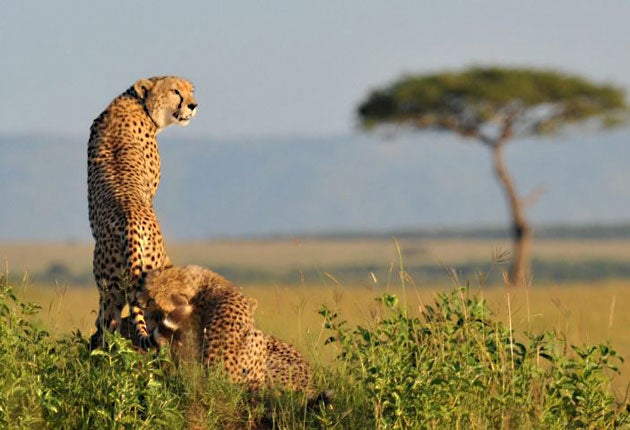Cheetahs face extinction without protection, UN warns

Your support helps us to tell the story
From reproductive rights to climate change to Big Tech, The Independent is on the ground when the story is developing. Whether it's investigating the financials of Elon Musk's pro-Trump PAC or producing our latest documentary, 'The A Word', which shines a light on the American women fighting for reproductive rights, we know how important it is to parse out the facts from the messaging.
At such a critical moment in US history, we need reporters on the ground. Your donation allows us to keep sending journalists to speak to both sides of the story.
The Independent is trusted by Americans across the entire political spectrum. And unlike many other quality news outlets, we choose not to lock Americans out of our reporting and analysis with paywalls. We believe quality journalism should be available to everyone, paid for by those who can afford it.
Your support makes all the difference.The cheetah is in danger of becoming the latest casualty in the mass extinction of species. The United Nations Environment Programme (Unep) said the big cat was critically endangered, and wants increased protection for the world's fastest land animal. Habitat loss, over-hunting and the lack of an effective captive breeding programme were blamed for the population decline to just 10 per cent of historic levels.
A total of 21 species, including the Irrawaddy dolphin, West African manatee, mako and porbeagle sharks, African wild dog and Egyptian vulture are listed for greater protection by the Convention on the Conservation of Migratory Species of Wild Animals (CMS). Governments will be asked to restore habitats, clear migration routes and take other measures. Unep, which administers the list, said the cheetah should get increased protection in 80 per cent of the countries it lives in, with three nations expected to opt out of the scheme.
A statement said the cheetah is extinct in 18 countries, adding: "Fewer than 10,000 adult cheetahs now live in Africa, and a meagre 50 in Asia, mainly around Iran's Kavir desert." There are also fewer than 8,000 African wild dogs, a fall caused by conflict with humans and disease. The species has been eradicated from western and most of central Africa. "Fences on their migration paths further endanger these roaming predators," Unep said.
The World Conservation Union's Red List shows nearly a quarter of dolphins at risk of extinction.
Join our commenting forum
Join thought-provoking conversations, follow other Independent readers and see their replies
Comments